Is There an Easy Way to See What Drivers I Need to Update
How Do You Know Which Drivers Need Updating?
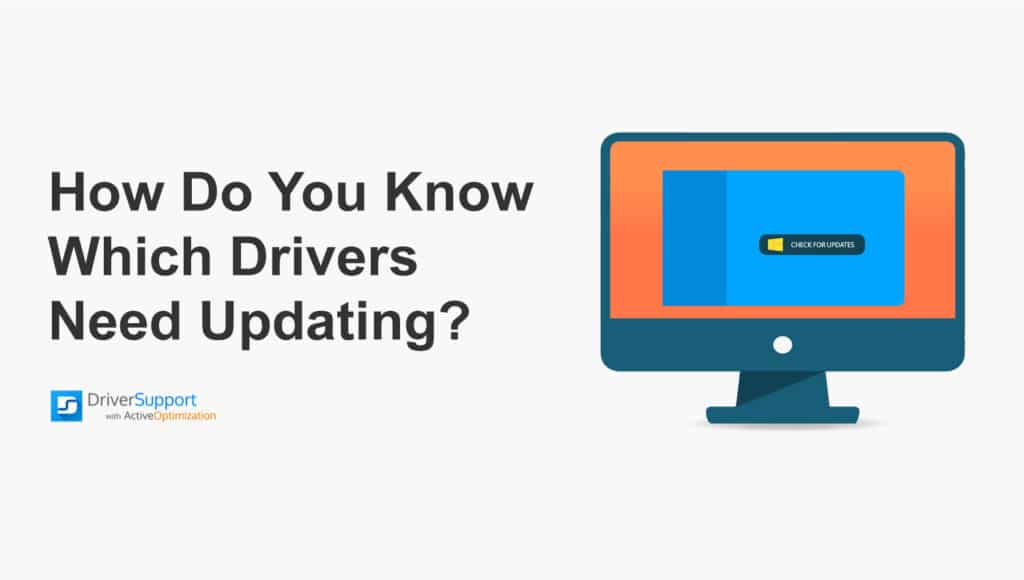
One of the benefits of running your computer with Microsoft Windows is the overwhelming popularity of the operating system (OS). Having such an enormous user base encourages manufacturers of every type of device to support Windows and its many features, creating a vast array of third-party products, such as:
- Pointing devices such as trackballs and every type of mouse
- Printers and scanners of every manufacturer
- Monitors and keyboards
- Graphics cards
- Sound cards and audio equipment
- Storage devices – including internal and external drives
- Networking peripherals – hubs, routers, modems, etc.
In order to accommodate all these devices, Microsoft is continuously updating its OS to add features, fix software bugs, and support new peripherals.
Windows can be a complex system to deal with at times, especially when you have unexpected things happen when working with your system, such as a printer that doesn't produce the desired results, inability to connect to a network, or any combination of technical issues.
Troubleshooting problems can include everything from checking cable connections to rebooting your system or checking for driver updates that may resolve your issues. How do you know which drivers need updating? Read on to learn how you can easily do this.
How Do You Know Which Drivers Need Updating?
For only $9.99 a month Driver Support | ONE can help you save time and frustration dealing with common Windows device issues as well as added optimization and safety features.
Give Driver Support a Try Today
There are several conditions that should trigger your need to update drivers for your system:
Buying a new computer – Even though Windows comes pre-installed on your new computer or laptop, there may be many updates that have been released since Windows was installed. One of your first actions after setting up a new computer should be to apply the latest updates.
Updates to the operating system – When Windows updates are downloaded, either automatically or manually, there could be an impact to your devices. Installing the latest drivers for your system will help avoid any compatibility or functional issues.
New peripherals – When you install new devices such as printers, keyboards, or storage units, installing the most recent drivers is an important step in assuring the device is working properly.
When a component of your system is failing or not working normally, updating the driver for that device is a smart first step toward problem resolution.
How Do You Check for Outdated Drivers?
Windows offers several methods to update your drivers – either automated or through manual processes.
Windows Update
An easy way to keep your system updated is by using Windows Update. Microsoft includes this function to make the process simple for most users of Windows.
Even if you don't need driver updates, it's in every Windows user's best interest to have Windows Update active for regular updates of various categories, as prioritized by Microsoft:
- Optional – software updates or system drivers that are provided to fix minor bugs or improve performance
- Recommended – fixes to correct issues that are not critical for most Windows users
- Important – updates to specifically address security or reliability issues
To start Windows Update, simply click the Windows Start button, click the Settings icon, and select Update and Security:

Windows Update will start. It will display the last time that you checked for updates. Just click the Check for Updates button to let Windows Update do its work.
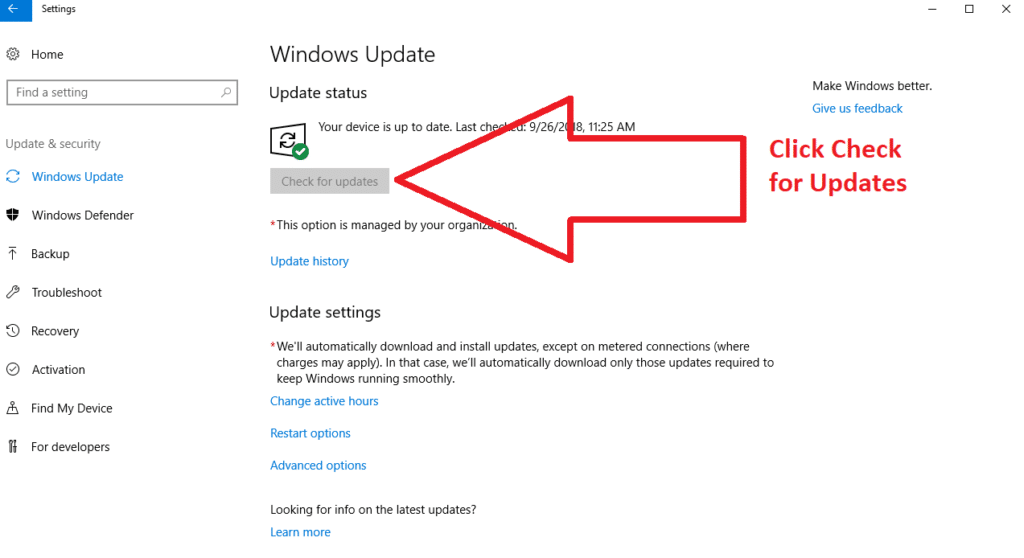
Windows Update will compare your system's components against its database that includes Microsoft updates and objects from third parties, including drivers. Any updates identified will be downloaded and installed to your system. Windows Update will prompt you through the process and inform you when updates are complete.
As installed with Windows, this update process is configured to run periodically and automatically. If you prefer, you can customize Windows Update to run to suit your own schedule. The program typically runs daily, but it may not find and install anything every day. There are options within the program to control its functions.
From the Windows Update program, just click the Advanced Options link:
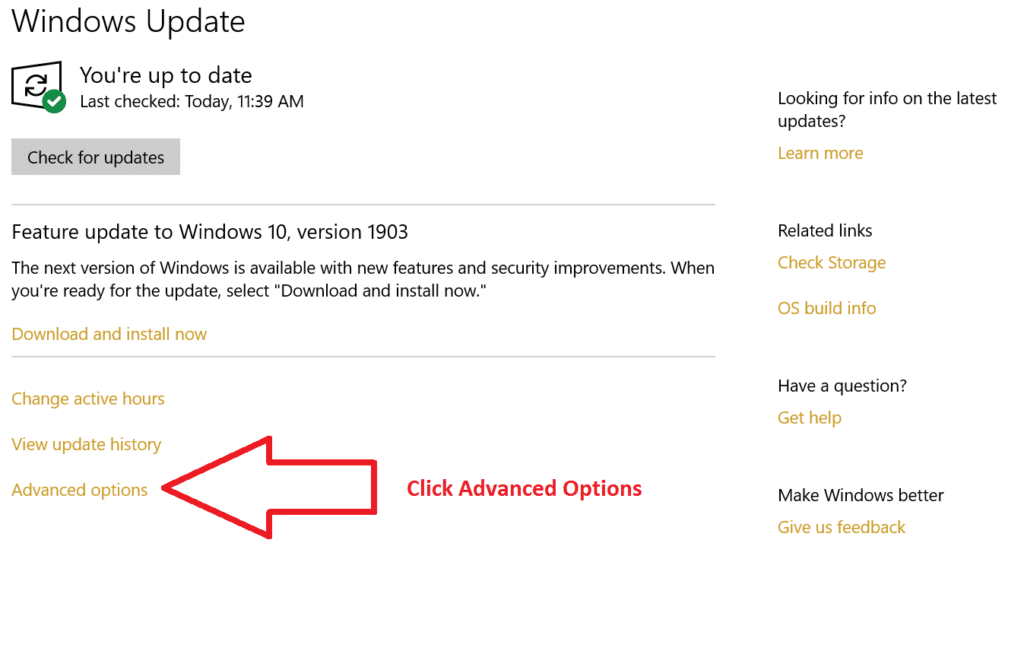
You will find several options that allow you to control the Windows Update processing:
- A checkbox that specifies to update non-Microsoft products when doing updates
- Choose how updates are delivered (allows checking for updates from other computers, besides Microsoft)
Other ways to control Windows Update
From the Windows Update program, select Change settings:
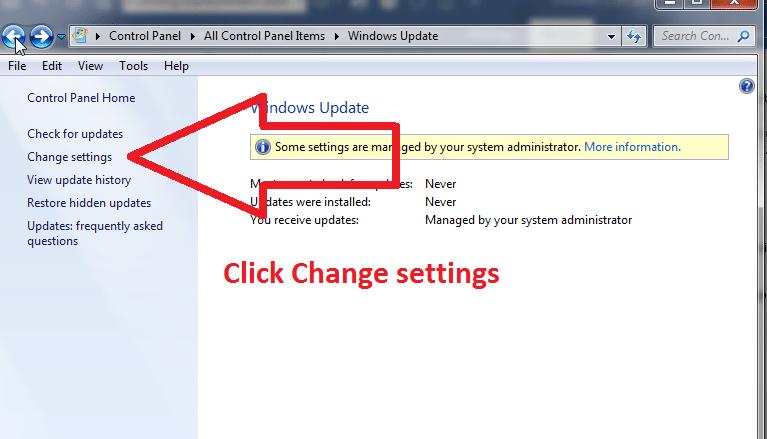
You will have several options on the next panel, including:
- Never check for updates – obviously not a good choice
- Who is allowed to install updates
- How to be notified when updates are available
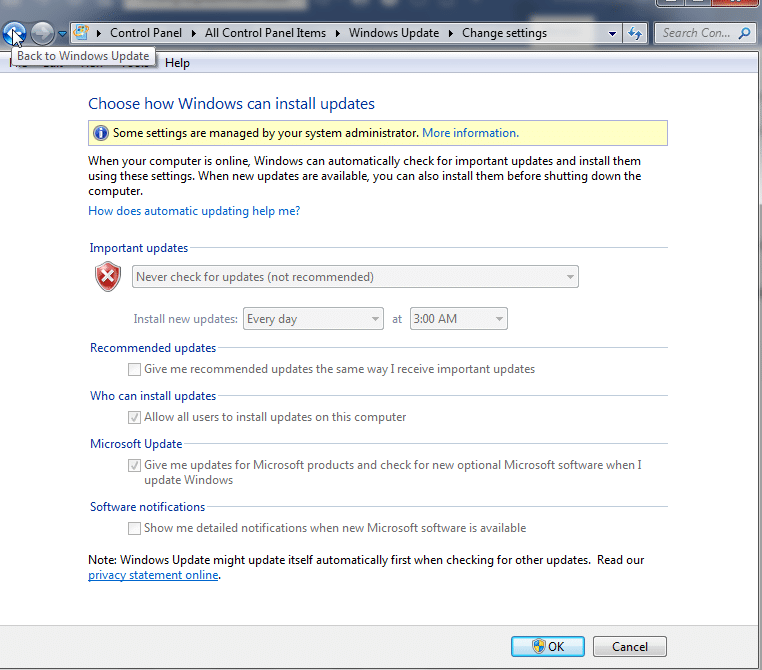
When Windows Update has completed all downloads and software updates, it may be necessary to restart your system to activate all the changes.
An important fact about Windows Update – not all peripheral manufacturers register their software and driver updates with Microsoft on a timely basis. Some may not even utilize that process at all, requiring you to take the next step.
For only $9.99 a month Driver Support | ONE can help you save time and frustration dealing with common Windows device issues as well as added optimization and safety features.
Give Driver Support a Try Today
Device Manager
To update individual device drivers, you can use the Windows Device Manager.
Note that to update drivers using this method, you need to be certain which device you believe to be a candidate for driver updates. If you intend to update drivers for multiple devices, you will need to update each device separately when using Device Manager.
This is somewhat more technical than using Windows Update but is still a reasonably straightforward process. Start by keying Device Manager into the Windows search box, and select Update device drivers:
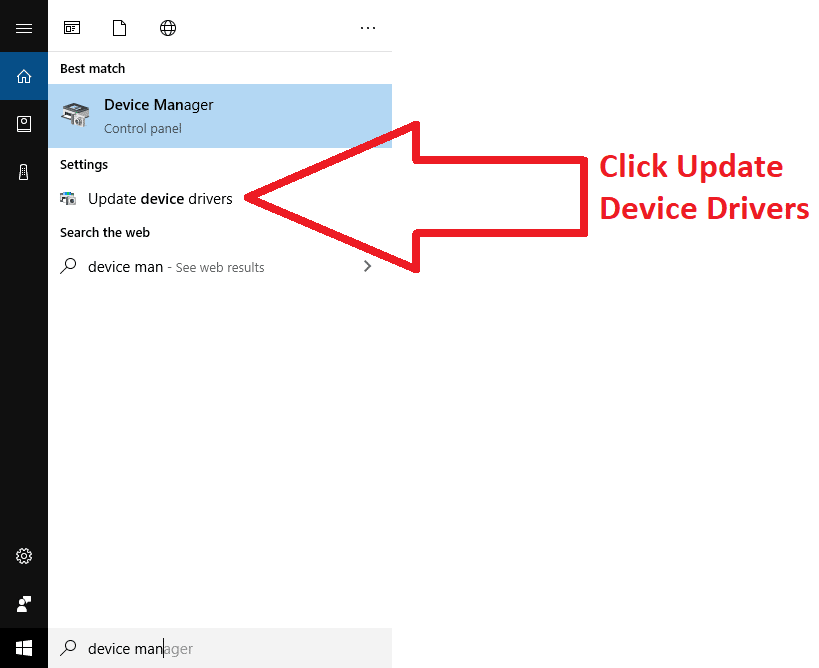
Devices on your system will be displayed in a list. Select the device you want to update, then right-click, and press the Properties button.
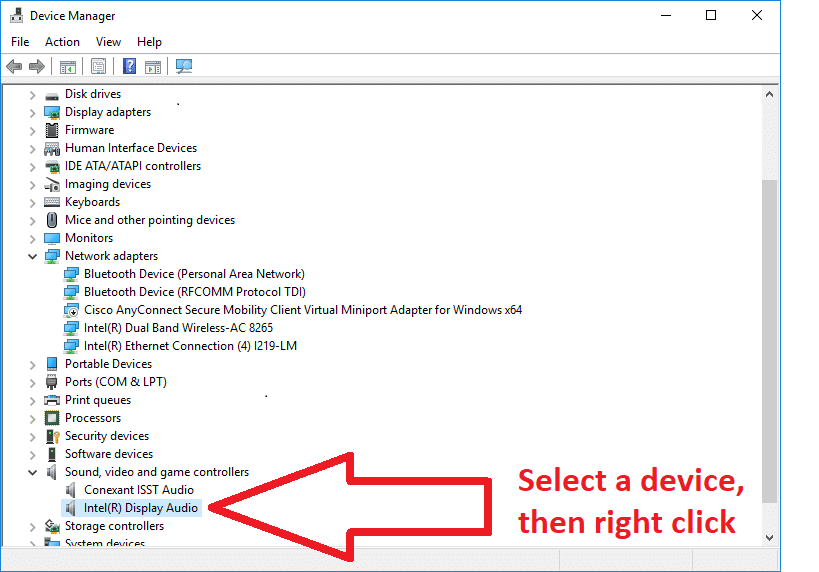
The properties of the device will be displayed, including the details of your existing driver (provider, date installed, etc.)
To update the driver, click the Update Driver button.
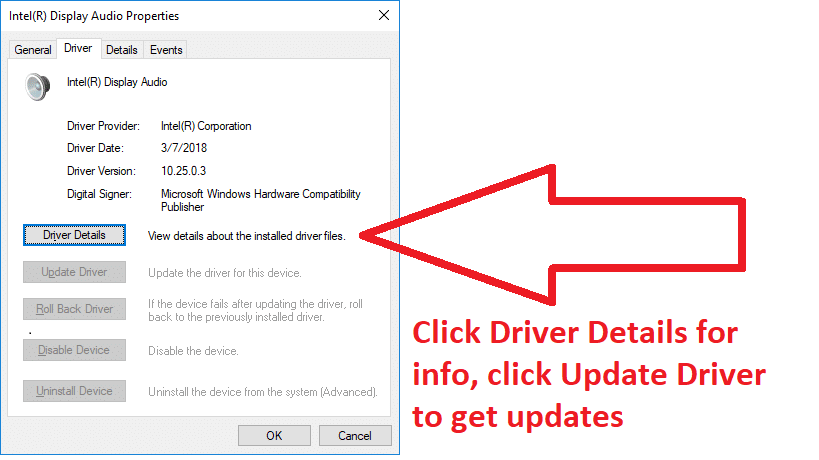
Windows will prompt you for the location of the driver or alternately search for the desired driver on the internet. If you have media with the driver, you can direct Device Manager to that media to complete the driver installation. Use caution when loading drivers from media. Driver files often have somewhat cryptic names that may make it difficult to determine which is right for your system.
This process is of course only useful if you either have the driver already or know where to locate the appropriate driver. Another option for locating your driver is to search the support website provided by the manufacturer of your device.
Using the Internet to Search for and Download Drivers
If you feel sure you know which driver is outdated or just need to check for a particular device driver, use the internet to search the manufacturer's support website, where you can browse for the driver that applies to your system. You will probably need to know several critical pieces of information:
- The version of Windows on your system (WIN7, WIN10, Home or Pro, 32 or 64-bit)
- Product type
- Model and version of the device you're trying to update
Some searches may be more complex than others, as in this driver search example:
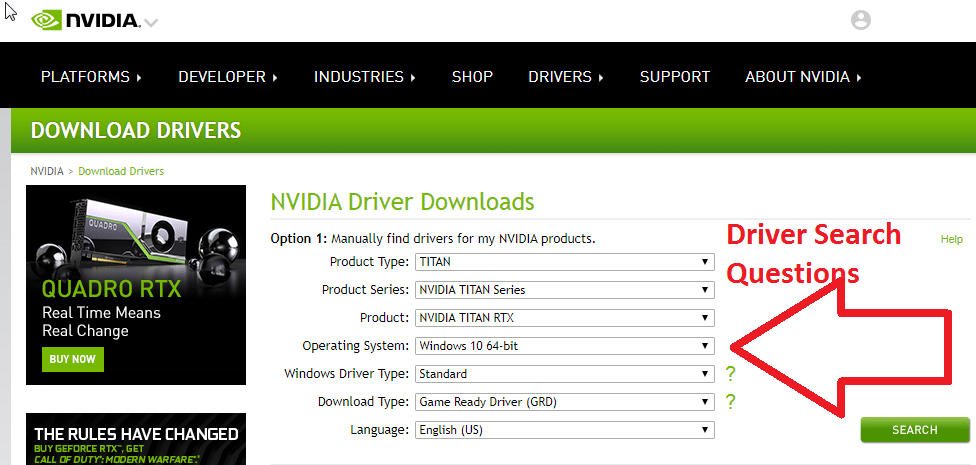
Let Driver Support Do the Work for You
Many computer users are not comfortable with updating software, especially more technical components like device drivers. If you're one of those individuals, or you may have concerns about not knowing which drivers to update, there are solutions tailor-made for you. Services are available that will remove your concerns for security or selecting the right drivers that will work best for your system and devices.
Since 1996, Driver Support has been providing automated analysis of computer systems for outdated or missing drivers for our customers. With a single download and installation of Driver Support, computer owners like you receive many advantages:
- Secure downloads and easy, automatic installation of drivers
- Time saved searching for the correct drivers for your system
- No guesswork in choosing the correct or best drivers for every component of your system
- Replace generic drivers to reduce device failures and ensure full support of manufacturers' features
- Keep your system up to date and running at peak performance
Manufacturers strive to keep their devices secure with updated software whenever necessary.
Give Driver Support | ONE a try today!. Driver Support the most effective way to keep your system running smoothly and securely without the hassle and guesswork involved in updating drivers. Contact us today to be sure your system is free from outdated or missing drivers – automatically.
Was this article helpful?
Source: https://www.driversupport.com/knowledge-article/how-do-you-know-which-drivers-need-updating/
0 Response to "Is There an Easy Way to See What Drivers I Need to Update"
Post a Comment